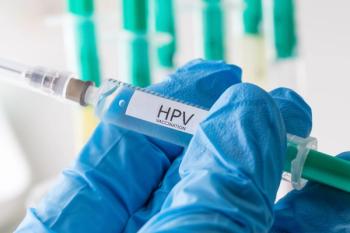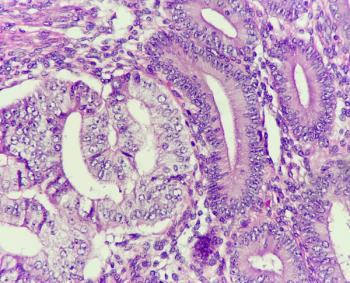
A new study suggests that sex-based differences in the kynurenine pathway may contribute to depression risk in adolescents, offering insights for personalized treatment approaches.

A new study suggests that sex-based differences in the kynurenine pathway may contribute to depression risk in adolescents, offering insights for personalized treatment approaches.

A new study found that exclusive or longer-duration breastfeeding is associated with a reduced risk of language, social, and neurodevelopmental delays in young children.

The approval marks a vital step toward care for urinary tract infections, helping to reduce recurrence and improve patients’ quality of life.

Ryan Haumschild, PharmD, MS, MBA, CPEL, explains the impact recently FDA-approved gepotidacin will have on uncomplicated UTIs and what this means in terms of antibiotic stewardship.

A new study highlights the importance of analyzing racial and ethnic subgroups to better understand prenatal depression diagnoses, symptom severity, and disparities in treatment.

A recent study identified key outcomes for vasa previa diagnosis and treatment, uniting patient experiences and clinical expertise to improve future research and guidelines.

A new study found that Black and American Indian birthing individuals in the United States are more likely to deliver at lower-quality hospitals than White patients, highlighting systemic health care inequities.

A new study found that pregnant women infected with COVID-19, especially in the third trimester or with severe symptoms, faced higher risks of preterm birth, low birthweight, and neonatal intensive care unit admission.

A recent study found that polycystic ovary syndrome affects uterine cell composition and gene expression, shedding light on fertility challenges and potential treatment targets.

Review some of the top stories from the Contemporary OB/GYN website over the last week, and catch up on anything you may have missed.

A recent study found that a solution-focused approach significantly enhances mental well-being, sleep quality, and reproductive health in women of advanced maternal age undergoing in vitro fertilization.

A new study found that diet, exercise, and other health factors have a greater impact on heart disease risk in women than in men, highlighting the need for gender-specific prevention strategies.

Discover how historical biases in chronic pain research have led to treatment disparities between men and women and how new findings are paving the way for more effective management strategies, as discussed by Tuan Trang, PhD.

A new study finds that postmenopausal women with a reduced creatinine-to-cystatin C ratio experience decreased muscle volume and slower walking speed, highlighting its role as a potential biomarker for muscle health.

Researchers have discovered that leptin, a hormone linked to energy metabolism, plays a crucial role in driving neuropathic pain in women but not in men, opening the door to targeted pain treatments.

A nurse-led intervention increased HPV vaccination rates among Hispanic adolescents in a rural North Carolina clinic, according to research presented at the 2025 NAPNAP conference.

A new study found that states with restrictive abortion laws have seen an increase in babies born with cyanotic congenital heart disease, highlighting potential long-term health care challenges.

A recent study reveals significantly elevated placental interleukin 6 and vascular endothelial growth factor receptor 2 messenger RNA expression in fetal death cases, highlighting inflammation and impaired fetal protection mechanisms.

A recent study identified distinct gene signatures in placentae from gestational diabetes and pregestational diabetes pregnancies, offering potential for improved diagnosis and treatment strategies.

A study found that a first trimester circulating microparticle biomarker can help predict spontaneous preterm birth risk, potentially improving early intervention and neonatal outcomes.

A recent study suggests that the soluble fms-like tyrosine kinase 1 to placental growth factor ratio can help predict clinical deterioration, intrapartum fetal distress, and mode of delivery, offering valuable insights for patient counseling and labor management.

Wanda Filer, MD, MBA FAAFP, from Pelvital, discusses how the Flyte device uses groundbreaking mechanotherapy to provide an effective, non-surgical solution for stress urinary incontinence.

Many women struggle with stress urinary incontinence but delay treatment because of embarrassment and lack of awareness, highlighting a need for screening and innovative treatments.

Review some of the top stories from the Contemporary OB/GYN website over the last week, and catch up on anything you may have missed.

A new study found that while cervical cancer risks remain low for women who meet screening exit criteria, they increase with age and time since last screening.

A new study highlights that sentinel lymph node mapping poses a low risk of lymphedema in women with low-grade endometrial cancer, supporting its use for accurate surgical staging.

A new study reveals that robotic-assisted laparoscopy surgery offers a slight overall survival advantage over conventional laparoscopy surgery for endometrial cancer patients.

A new study highlights the connection between heavy or prolonged menstrual bleeding and increased fatigue in menopausal women, emphasizing the need for greater clinical awareness and early intervention.

A recent study reveals significantly lower initiation and continuation rates of Mother’s own milk feeding among late preterm infants compared to other gestational age groups, highlighting a need for targeted support.

John PFA Heesakkers, MD, PhD, MBA, with Maastricht Universitair Medisch Centrum, highlights a study revealing that the Revi System significantly reduces urinary incontinence episodes, offering a side-effect-free alternative to traditional treatments with high patient satisfaction.